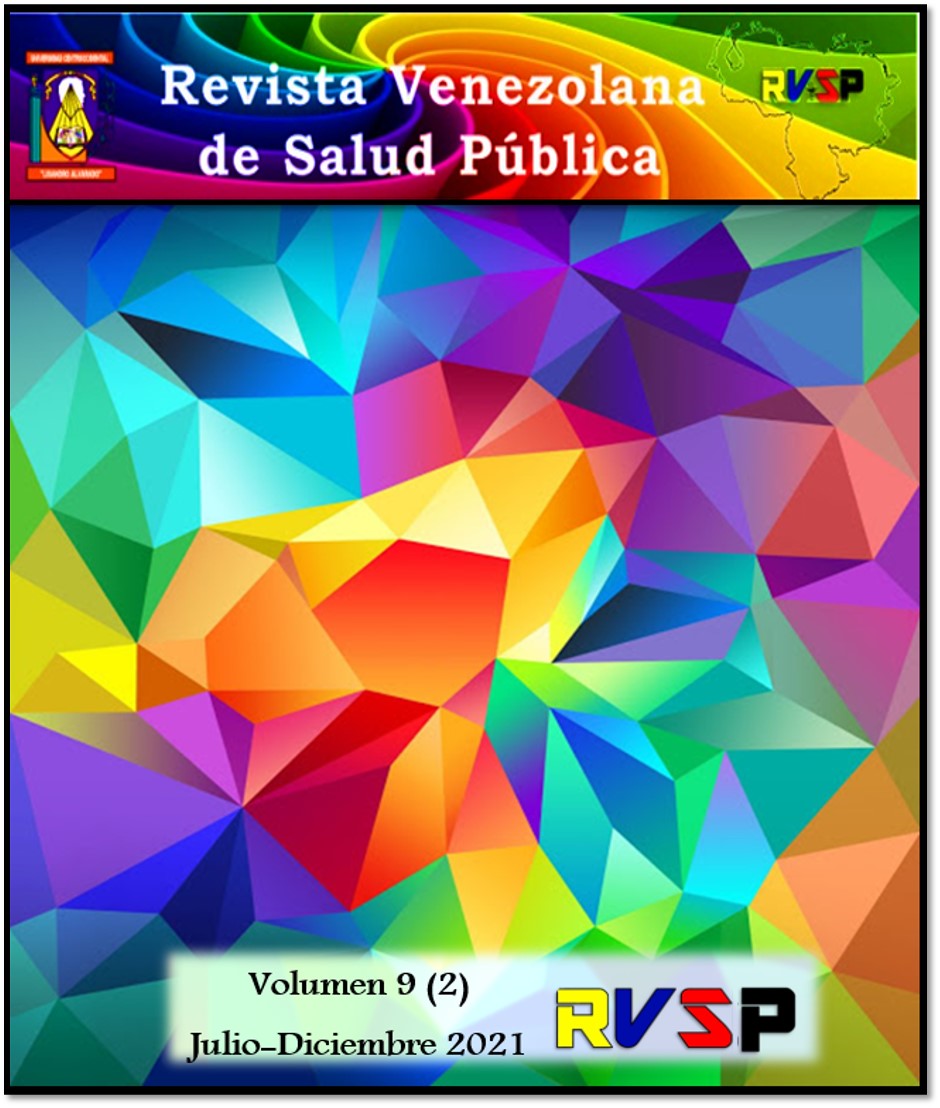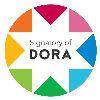Consumo de comida chatarra y actividad física durante la pandemia de covid-19 en México
Palabras clave:
comida chatarra, actividad física, pandemia por COVID-19, jóvenesResumen
Analizar el efecto de la pandemia de COVID-19 en la actividad física y el consumo de comida chatarra en los jóvenes de Nayarit. El estudio fue descriptivo y observacional realizado entre febrero y agosto de 2020. Participaron 1004 jóvenes (16 y 24 años) de los municipios de Tepic (Tpc, 407), San Pedro Lagunilla (SnPdLg, 186), San Blas (SnBl, 211) y El Nayar (Nay, 200) de manera voluntaria. La actividad física (PA) se midió mediante el IPAQ-C con una escala de frecuencia (0,25,50,75,100%). La frecuencia de consumo de comida chatarra (JF) se evaluó siguiendo el protocolo de Thompson. Se propuso reducir la JF y la PA durante cuatro semanas. La evaluación antropométrica se midió con métodos estándar. Los jóvenes prefieren sentarse a ver algo en la televisión, el ordenador o el móvil. El consumo de las patatas fritas, las galletas, los refrescos y la cerveza aumentaron en todos los municipios. Los jóvenes de los cuatro municipios redujeron el consumo de pizza, sopas enlatadas, juegos procesados y las bebidas energéticas durante cuatro semanas. Los jóvenes sustituyeron la JF por frutos secos, frutas de temporada y verduras. Casi todos los participantes prefirieron hacer ejercicio en su habitación o en el pasillo de su casa entre 30 minutos a 1 hora. Tpc tuvo la mayor incidencia de obesidad (61,73%), pero cuando cambiaron sus hábitos se redujo al 40,29%. La pandemia del COVID-19 modificó la dieta y el peso corporal en los jóvenes de Nayarit.
Descargas
Citas
2. Hernández-Ramirez CL, Ramirez-González GM, Mercado-Mercado G. Junk food: impact on the eating habits of university school undergraduate in Tepic Mexico. J Res Health Sci 2019; 3(5-6): 22-30.
3. Das JC. Fast food consumption in children: A review. Med clin rev [Internet]. 2016;01(01). Disponible en: http://dx.doi.org/10.21767/2471-299x.1000001.
4 Naeem Z. Increasing trend of junk food use in Saudin Arabia and health implications. Int J Health Sci 2012; 6(1): V-VI.
5. Consecuencias de la pandemia de covid-19 en la salud de los chilenos – SOCHOB [Internet]. Sochob.cl. [citado el 29 de agosto de 2021]. Disponible en: https://www.sochob.cl/web1/consecuencias-de-la-pandemia-de-covid-19-en-la-salud-de-los-chilenos/
6. Out A, Charles CH, Yaya S. Mental health and psychosocial well-being during the COVID-19 pandemic: the invisible elephant in the room. Int J Ment Health Syst. 2020; 14(1): 38.
7. Mattioli AV, Sciomer S, Cocchi C, Maffei S, Gallina S. Quarantine during COVID-19 outbreak: Quarantine during COVID-19 outbreak: Changes in diet and physical activity increase the risk of cardiovascular disease. Nutr Metab Cardiovasc Dis. 2020; 30(9): 1409–17.
8. Di Renzo L, Gualtieri P, Pivari F, Soldati L, Attinà A, Cinelli G, et al. Eating habits and lifestyle changes during COVID-19 lockdown: an Italian survey. J Transl Med. 2020; 18(1): 229.
9. Pérez-Rodrigo C, Gianzo-Citores M, Hervás-Bárbara G, Ruiz-Litago F, Sáenz LC, Arija V, Pérez-Rodrigo C, Gianzo Citores M, Hervás Bárbara G, Ruiz-Litago F, Casis Sáenz L, Arija V, et al. Patterns of change in dietary habits and physical activity during lockdown in Spain due to the COVID-19 pandemic. Nutrients. 2021; 13(2): 300.
10. Fanelli RM. Changes in the food-related behaviour of Italian consumers during the COVID-19 pandemic. Foods. 2021; 10(1): 169.
11. Androutsos O, Perperidi M, Georgiou C, Chouliaras G. Lifestyle changes and determinants of children’s and adolescents’ body weight increase during the first COVID-19 lockdown in Greece: The COV-EAT study. Nutrients. 2021; 13(3): 930.
12. Barazzoni R, Bischoff SC, Breda J, Wickramasinghe K, Krznaric Z, Nitzan D, et al. ESPEN expert statements and practical guidance for nutritional management of individuals with SARS-CoV-2 infection. Clin Nutr. 2020; 39(6): 1631–8.
13. Bin-Zarah A, Enríquez-Marulanda J, Andrade JM. Relationship between dietary habits, food attitudes and food security status among adults living within the United States three months post-mandated quarantine: A cross-sectional study. Nutrients. 2020; 12(11): 3468.
14. Enriquez-Martinez OG, Martins MCT, Pereira TSS, Pacheco SOS, Pacheco FJ, Lopez KV, et al. Diet and lifestyle changes during the COVID-19 pandemic in Ibero-American countries: Argentina, Brazil, Mexico, Peru, and Spain. Front Nutr. 2021; 8:671004.
15. Ramos-Padilla P, Villavicencio-Barriga VD, Cárdenas-Quintana H, Abril-Merizalde L, Solís-Manzano A, Carpio-Arias TV. Eating habits and sleep quality during the COVID-19 pandemic in adult population of Ecuador. Int J Environ Res Public Health. 2021; 18(7): 3606.
16. Bailey SM, Udoh US, Young ME. Circadian regulation of metabolism. J Endrocrinol 2014; 222 (2): R75-R96.
17. Thompson FE, Subar AF, Brown CC, Smith AF, Sharbaugh CO, Jobe JB, et al. Cognitive research enhances accuracy of food frequency questionnaire reports: results of an experimental validation study. J Am Diet Assoc. 2002; 102(2): 212–25.
18. Roennerberg T, Merrow M. The circadian clock and human health. Curr Biol. 2016;26(10): R432–43.
19. Bourdas DI, Zacharakis ED. Impact of COVID-19 lockdown on physical activity in a sample of Greek adults. Sports. 2020; 8(10): 139.
20. Caputo EL, Reichert FF. Studies of physical activity and COVID-19 during the pandemic: A scoping review. J Phys Act Health. 2020; 17(12): 1275–84.
21. Tabozzi SA, Di Santo SG, Franchini F, Ratto F, Luchi M, Filiputti B, et al. Sedentary behaviors and physical activity habits independently affect fat oxidation in fasting conditions ad capillary glucose levels after standardized glucose-rich meal in health females. Front Physiol. 2020; 11:710.
22. Huber BC, Steffen J, Schlichtiger J, Graupe T, Deuster E, Strouvelle VP, et al. Alteration of physical activity during COVID-19 pandemic lockdown in young adults. J Transl Med. 2020; 18(1): 410.
23. Thyfault JP, Du M, Kraus WE, Levine JA, Booth FW. Physiology of sedentary behavior and its relationship to health outcomes. Med Sci Sports Exerc. 2015; 47(6): 1301–5.
24. Halabchi F, Mazaheri R, Sabeti K, Yunesian M, Alizadeh Z, Ahmadinejad Z, et al. Regular sports participation as a potential predictor of better clinical outcome in adult pationst with COVID-19: large cross-sectional study. J Phys Act Health 2020;18(1):8-12.
25. Hallal PC, Bauman AE, Heath GW, Kohl HW 3rd, Lee I-M, Pratt M. Physical activity: more of the same is not enough. Lancet. 2012; 380(9838):190–1.
26. WHO. World Health Organization. Global recommendations on physical activity for health. OMS Ed. Ginebra, Suiza: OMS; 2010.
27. Lee I-M, Shiroma EJ, Lobelo F, Puska P, Blair SN, Katzmarzyk PT, et al. Effect of physical inactivity on major non-communicable diseases worldwide: an analysis of burden of disease and life expectancy. Lancet. 2012; 380(9838): 219–29.
28. Wen CP, Wai JP, Tsai MK, Yang YC, Cheng TY, Lee MC, Chan HT, Tsao CK, Tsai SP, Wen CP, Wai JPM, Tsai MK, Yang YC, Cheng TYD, Lee M-C, et al. Minimum amount of physical activity for reduced mortality and extended life expectancy: a prospective cohort study. Lancet. 2011; 378(9798): 1244–53.
29. Bélanger M, Foster C. Worldwide prevalence of physical inactivity calls for worldwide actions. Prev Med. 2011; 53(1–2): 29–30.
30. Kohl HW 3rd, Craig CL, Lambert EV, Inoue S, Alkandari JR, Leetongin G, et al. The pandemic of physical inactivity: global action for public health. Lancet. 2012; 380(9838): 294–305.
31. Ben Hassen T, El Bilali H, Allahyari MS. Impact of COVID-19 on food behavior and consumption in Qatar. Sustainability. 2020; 12(17): 6973.
32. Sidor A, Rzymski P. Dietary Choices and Habits during COVID-19 Lockdown: Experience from Poland. Nutrients. 2020;12(6):1657.
33. Yilmaz HO, Asian R, Unal C. Effect of the COVID-19 pandemic on eating habits and food purchasing behaviors of University students. J Kesehatan Masyarakat National 2020; 15(3):154-159.
34. Reichelt AC, Rank MM. The impact of junk foods on the adolescent brain. Birth Defects Res. 2017; 109(20): 1649–58.
35. Ashby NJS. Impact of the COVID-19 pandemic on unhealthy eating in populations with obesity. Obesity (Silver Spring). 2020; 28(10): 1802–5.
36. Vilallonga R, Moreno Villares JM, Yeste Fernández D, Sánchez Santos R, Casanueva Freijo F, Santolaya Ochando F, et al. Erratum to: Initial approach to childhood obesity in Spain. A multisociety expert panel assessment. Obes Surg. 2017; 27(4): 1007–1007.
37. Khubchandani J, Kandiah J, Saiki D. The COVID-19 pandemic, stress, and eating practices in the United States. Eur J Investig Health Psychol Educ. 2020; 10(4): 950–6.
38. Kaya S, Uzdil Z, Cakiroğlu FP. Evaluation of the effects of fear and anxiety on nutrition during the COVID-19 pandemic in Turkey. Public Health Nutr. 2021; 24(2): 282–9.
39. Rajan TM, Menon V. Psychiatric disorders and obesity: A review of association studies. J Postgrad Med. 2017; 63(3):182–90.
40. Ximena RT, Francisco VM. Actividad física en la prevención y tratamiento de la obesidad infantil. Rev médica Clín Las Condes. 2012; 23(3): 218–25.
Publicado
Cómo citar
Número
Sección

Está obra está bajo licencia Creative Commons Attribution-NonCommercial-ShareAlike 4.0 International License.
Derechos del/de autor/es a partir del año de publicación
Esta obra está bajo la licencia:
Creative Commons Reconocimiento-NoComercial-CompartirIgual 4.0 Internacional (CC BY-NC-SA 4.0)
Las opiniones expresadas por los autores no necesariamente reflejan la postura del editor de la publicación ni de la UCLA. Se autoriza la reproducción total o parcial de los textos aquí publicados, siempre y cuando se cite la fuente completa y la dirección electrónica de esta revista. Los autores(as) tienen el derecho de utilizar sus artículos para cualquier propósito siempre y cuando se realice sin fines de lucro. Los autores(as) pueden publicar en internet o cualquier otro medio la versión final aprobada de su trabajo, luego que esta ha sido publicada en esta revista.






